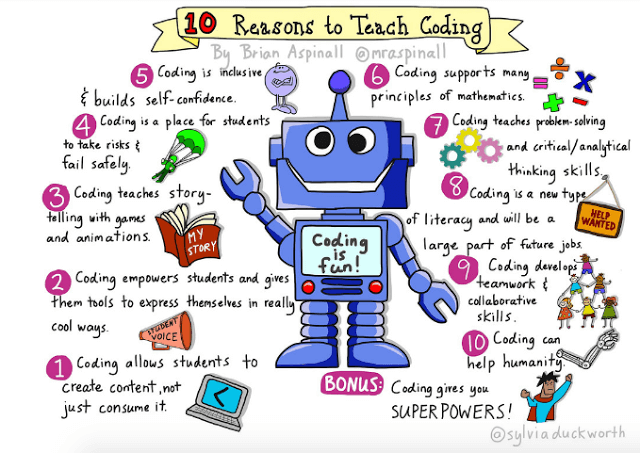Coding and Robotics in the classroom is beneficial for
students and can be used across all content areas. It is important to allow
students the opportunity to play and interact with the coding materials before you
implement them into the lesson. This promotes encouragement and puts less
stress on perfection. Coding can be used all across the curriculum and is rich
in STEAM strategies. Free programs are available; however, you can purchase
BeeBots and other coding applications online. BeeBots are small robots that
students can manipulate and code to follow certain paths and patterns. BeeBots
can be used in math, literacy, science, and social studies. Teachers can set up
a grid with multiple numbers and have students create a code that moves the
BeeBot to the product, sum, or difference of a set of numbers. In literacy, students
can map out the sequence of events in a story, show letter-sound correspondences,
or even code the BeeBot to spell out spelling or high-frequency words. Students
can map out the different life cycles or body systems in science, and can pinpoint
locations on a map in social studies. The main reason for using coding and robotics
in the classroom is to teach students how to problem solve, preserver through a
tough task, think critically, be creative, and work as a team to reach a common
goal.
 |
| Coding in Lower-Elementary |
One thing about using coding and robotics in the classroom that
surprised me is how much it impacts the learning of young elementary students. When
I initially heard of coding in the classroom, my mind immediately went to upper
middle and high school students. I am so shocked that pre-k students can use
coding to identify shapes, colors, numbers, and letters. Coding at a young age promotes
a gender-free environment. It shows students that girls, too, can enjoy
programing and engineering. Another thing that stood out to me was how BeeBots
and other coding activities normalizes trial and error. It is important that students
know how to handle failure and learn from their mistakes. The teacher should
normalize such outcomes because students will grow in their learning and
strengthen problem-solving skills
 |
| Why should we code?? |

No comments:
Post a Comment